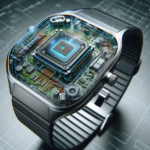Understanding the Role of CPUs in Wearable Technology

Understanding the Role of CPUs in Wearable Technology
Wearable technology has become an integral part of our daily lives, from fitness trackers and smartwatches to augmented reality glasses and health monitoring devices. At the heart of these sophisticated gadgets lies the Central Processing Unit (CPU), a critical component that drives their functionality. This article delves into the role of CPUs in wearable technology, exploring their importance, functionality, and future trends.
The Basics of CPUs
What is a CPU?
The Central Processing Unit (CPU) is often referred to as the “brain” of a computer. It performs the essential task of executing instructions from programs, processing data, and managing tasks. In wearable technology, the CPU is responsible for running the operating system, applications, and various sensors that make these devices smart and interactive.
How CPUs Work
CPUs operate by following a cycle known as the fetch-decode-execute cycle. This involves fetching instructions from memory, decoding them to understand the required action, and then executing the instructions. This cycle is repeated millions of times per second, allowing the CPU to perform complex computations and tasks efficiently.
The Role of CPUs in Wearable Technology
Processing Power and Efficiency
Wearable devices require CPUs that are not only powerful but also energy-efficient. Unlike traditional computers, wearables are constrained by size and battery life. Therefore, the CPUs used in these devices must strike a balance between performance and power consumption. Modern wearable CPUs are designed using advanced semiconductor technologies that minimize power usage while maximizing processing capabilities.
Integration with Sensors
Wearable technology relies heavily on various sensors to collect data, such as accelerometers, gyroscopes, heart rate monitors, and GPS modules. The CPU plays a crucial role in processing the data from these sensors in real-time. For instance, in a fitness tracker, the CPU processes data from the accelerometer to count steps, monitor sleep patterns, and track physical activities.
Running Applications
Wearable devices often run specialized applications that provide users with valuable insights and functionalities. The CPU ensures that these applications run smoothly by managing system resources and executing application code efficiently. Whether it’s a health monitoring app or a navigation tool, the CPU’s performance directly impacts the user experience.
Connectivity and Communication
Many wearable devices are designed to communicate with other devices, such as smartphones, tablets, or computers. The CPU manages these communication protocols, including Bluetooth, Wi-Fi, and NFC, ensuring seamless data transfer and synchronization. This connectivity allows wearables to extend their functionality and provide a more integrated user experience.
Types of CPUs in Wearable Technology
Microcontrollers (MCUs)
Microcontrollers are commonly used in simpler wearable devices due to their low power consumption and cost-effectiveness. These CPUs are designed to handle specific tasks and are ideal for devices like fitness trackers and basic health monitors. MCUs integrate a CPU, memory, and peripherals on a single chip, making them compact and efficient.
System on Chip (SoC)
System on Chip (SoC) solutions are more advanced and are used in high-end wearable devices like smartwatches and augmented reality glasses. An SoC integrates multiple components, including the CPU, GPU, memory, and connectivity modules, onto a single chip. This integration allows for greater performance and functionality while maintaining energy efficiency.
Application Processors
Application processors are powerful CPUs designed to run complex applications and operating systems. These processors are typically found in premium wearables that require high processing power, such as smartwatches with advanced features like voice recognition, AI capabilities, and high-resolution displays.
Challenges and Innovations in Wearable CPUs
Power Consumption
One of the primary challenges in wearable technology is managing power consumption. Since wearables are often battery-powered and designed for extended use, optimizing the CPU’s power efficiency is crucial. Innovations in semiconductor technology, such as the development of ultra-low-power processors, are addressing this challenge by reducing energy consumption without compromising performance.
Thermal Management
Wearable devices are compact and have limited space for heat dissipation. As a result, managing the heat generated by the CPU is a significant challenge. Advanced cooling solutions, such as thermal management materials and efficient heat sinks, are being developed to ensure that wearables remain cool and comfortable to wear.
Miniaturization
The trend towards smaller and more compact wearable devices necessitates the miniaturization of CPUs. Engineers are continually working on shrinking the size of processors while maintaining or enhancing their performance. This involves using cutting-edge fabrication techniques and materials to create smaller, more efficient CPUs.
AI and Machine Learning
Artificial Intelligence (AI) and Machine Learning (ML) are becoming increasingly important in wearable technology. CPUs with integrated AI and ML capabilities can process data locally, enabling real-time analysis and decision-making. This is particularly useful in health monitoring devices that need to provide immediate feedback based on sensor data.
Future Trends in Wearable CPUs
Edge Computing
Edge computing involves processing data closer to the source, reducing latency and improving efficiency. In wearable technology, this means that CPUs will become more capable of handling complex computations locally, without relying on cloud-based servers. This trend will enhance the performance and responsiveness of wearable devices.
Flexible and Wearable CPUs
Researchers are exploring the development of flexible and wearable CPUs that can be integrated into clothing or directly onto the skin. These CPUs are made from flexible materials that can bend and stretch, providing new possibilities for wearable technology. This innovation could lead to the creation of more comfortable and unobtrusive wearables.
Enhanced Security
As wearable devices become more integrated into our lives, ensuring the security of personal data is paramount. Future CPUs will incorporate advanced security features, such as hardware-based encryption and secure boot processes, to protect sensitive information from cyber threats.
FAQ
What is the primary function of a CPU in wearable technology?
The primary function of a CPU in wearable technology is to execute instructions, process data from sensors, run applications, and manage connectivity with other devices. It ensures that the wearable device operates efficiently and provides the desired functionalities to the user.
Why is power efficiency important for CPUs in wearable devices?
Power efficiency is crucial for CPUs in wearable devices because these gadgets are often battery-powered and designed for extended use. Efficient power consumption ensures longer battery life, reducing the need for frequent recharging and enhancing the overall user experience.
What are the differences between Microcontrollers (MCUs) and System on Chip (SoC) solutions?
Microcontrollers (MCUs) are simpler and more cost-effective CPUs designed for specific tasks, making them ideal for basic wearable devices. System on Chip (SoC) solutions, on the other hand, integrate multiple components, including the CPU, GPU, memory, and connectivity modules, onto a single chip. SoCs offer greater performance and functionality, making them suitable for high-end wearables.
How do CPUs in wearables handle data from sensors?
CPUs in wearables process data from sensors in real-time by executing instructions that interpret and analyze the sensor data. This allows the device to provide immediate feedback and insights, such as counting steps, monitoring heart rate, or tracking physical activities.
What are the future trends in wearable CPUs?
Future trends in wearable CPUs include edge computing, which involves processing data locally to reduce latency and improve efficiency. Other trends include the development of flexible and wearable CPUs made from materials that can bend and stretch, as well as enhanced security features to protect personal data from cyber threats.
Conclusion
The role of CPUs in wearable technology is pivotal, driving the functionality, performance, and user experience of these devices. From processing sensor data and running applications to managing connectivity and ensuring power efficiency, CPUs are the backbone of wearable gadgets. As technology continues to evolve, innovations in CPU design and capabilities will pave the way for more advanced, efficient, and secure wearable devices. Understanding the role of CPUs in this context is essential for appreciating the complexities and potential of wearable technology.



